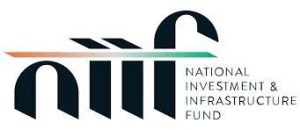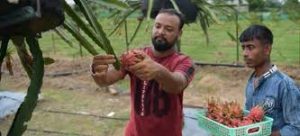Today’s Current Affairs: 12th April 2024 for UPSC IAS exams, State PSC exams, SSC CGL, State SSC, RRB, Railways, Banking Exam & IBPS, etc
Table of Contents
National Investment And Infrastructure Fund:

The NIIF has invested $200 million in iBUS Network and Infrastructure Pvt Ltd., a connectivity technology firm, to support the growth of India’s digital infrastructure.
- National Investment and Infrastructure Fund (NIIF) is a fund manager that invests in infrastructure and related sectors in India. It is India’s first-ever sovereign wealth fund (SWF), which was set up in 2015.
- It is a collaborative investment platform for international and Indian investors with a mandate to invest equity capital in domestic infrastructure.
- It invests across asset classes such as infrastructure, private equity, and other diversified sectors in India, with the objective of generating attractive risk-adjusted returns for its investors.
- It invests in greenfield (new), brownfield (existing), and stalled projects.
- NIIF is 49% owned by the Indian government and has more than $4.9 billion in assets under management, making it the country’s biggest infrastructure fund. It benefits from its association with the Government yet is independent in its investment decisions.
- It is majority-owned by institutional investors and managed professionally by a team with experience in investments and infrastructure.
- The funds are registered as Alternative Investment Fund (AIF) with the Securities Exchange Board of India (SEBI) and are currently raising capital from domestic and international institutional investors.
Fast-Moving Consumer Goods:

The Rs 5-trillion domestic fast-moving consumer goods (FMCG) market still faces hurdles on its path to complete recovery from the current slowdown.
- Fast-Moving Consumer Goods (FMCG) are products sold quickly and at a relatively low cost.
- The FMCG industry is characterized by high-volume sales, quick inventory turnover, and various products catering to consumer needs.
- These goods include essential everyday items such as food and beverages, toiletries, cleaning supplies, and other low-cost household items.
- They have a short shelf life because of high consumer demand (e.g., soft drinks and confections) or because they are perishable (e.g., meat, dairy products, and baked goods).
- The FMCG sector is the fourth-largest sector in the Indian economy.
- In 2022, the urban sector accounted for 65% of the overall annual FMCG sales, while rural India contributed over 35%.
- Household and personal care products make up 50% of the industry’s sales, healthcare claims 31-32%, and food and beverage products account for the remaining 18-19%.
- It provides employment to around 3 million people, accounting for approximately 5% of the total factory employment in India.
CDP-SURAKSHA Platform:

Government of India has come up with a new digital platform called CDP-SURAKSHA to disburse subsidies to horticulture farmers under the Cluster Development Programme (CDP).
- System for Unified Resource Allocation, Knowledge, and Secure Horticulture Assistance (SURAKSHA) is a platform which will allow an instant disbursal of subsidies to farmers in their bank account by utilising the e-RUPI voucher from the National Payments Corporation of India (NPCI).
- Database integration with PM-KISAN, cloud-based server space from NIC, UIDAI validation, eRUPI integration, local government directory (LGD), content management system, geotagging, and geo-fencing.
- The platform allows access to farmers, vendors, implementing agencies (IA), and cluster development agencies (CDAs), and officials of the National Horticulture Board (NHB).
- A farmer can login using their mobile number and place an order for planting material such as seeds, seedlings and plants based on their requirement.
- Once the demand has been raised by the farmer, the system will ask them to contribute their share of the cost of planting material.
- The subsidy amount paid by the government will appear on the screen automatically.
- After the farmer pays their contribution, an e-RUPI voucher will be generated.
- This voucher will then be received by a vendor, who will provide the required planting material to the farmer.
- Once the ordered planting material is delivered to the farmer, they have to verify the delivery through geo-tagged photos and videos of their field.
- It is only after the verification that the IA will release the money to the vendor for the e-RUPI voucher.
- The vendor will be required to upload an invoice of the payment on the portal.
- The IA will collect all the documents and share them with the CDA for subsidy release, then only the subsidy will be released to the IA.
Mange Disease : Outbreak Among Dogs

The forest department is monitoring an outbreak of mange among a pack of Asiatic wild dogs in the Mudumalai Tiger Reserve (MTR) in the Nilgiris.
- Mange Disease is a skin disease of animals caused by mite infestations, characterized by inflammation, itching, thickening of the skin and hair loss.
- The most severe form of mange is caused by varieties of the mite Sarcoptes scabiei, which also causes human scabies.
- Some form of mange is known in all domestic animals, although many varieties of mange mites infest only one species.
- They are transmitted between animals by direct contact and by objects that have been in contact with infected animals. Most forms of mange are treatable.
API Access To GPT-4 With Vision:

Following its launch, OpenAI’s ChatGPT has evolved by leaps and bounds and also recently announced API access to GPT-4 with Vision.
- GPT-4 Vision also referred to as GPT-4V which allows users to instruct GPT-4 to analyse image inputs.
- It has been considered OpenAI’s step forward towards making its chatbot multimodal an AI model with a combination of image, text and audio as inputs.
- It allows users to upload an image as input and ask a question about it.
- This task is known as visual question answering (VQA).
- It is a Large Multimodal Model or LMM, which is essentially a model that is capable of taking information in multiple modalities like text and images or text and audio and generating responses based on it.
- It has capabilities such as processing visual content including photographs, screenshots, and documents.
- The latest iteration allows it to perform a slew of tasks such as identifying objects within images, and interpreting and analysing data displayed in graphs, charts, and other visualisations.
- It can also interpret handwritten and printed text contained within images.
- This is a significant leap in AI as it, in a way, bridges the gap between visual understanding and textual analysis.
Fractals:

An international team of researchers’ discovered first fractal molecule in nature.
- Fractal is a never-ending pattern which is infinitely complex and self-similar across different scales.
- They are created by repeating a simple process over and over in an ongoing feedback loop.
- In essence, a fractal is a pattern that repeats forever, and every part of the fractal, regardless of how zoomed in or zoomed out you are, it looks very similar to the whole image.
- Fractals are distinct from the simple figures of classical, or Euclidean, geometry—the square, the circle, the sphere and so forth.
- Some of the more remarkable examples of such patterns include the design of human fingerprints, the stumps of trees, in the shells of snails, the system of human veins, the network of rivers as seen from high up, the splitting of veins in a plant leaf, the edges of a snowflake etc.
- They are capable of describing many irregularly shaped objects or spatially nonuniform phenomena in nature, such as coastlines and mountain ranges.
- Fractals are useful in modeling structures (such as eroded coastlines or snowflakes) in which similar patterns recur at progressively smaller scales and in describing partly random or chaotic phenomena such as crystal growth, fluid turbulence and galaxy formation.
Sungrazing Comets:

A tiny “sungrazer” comet was discovered during the recent total solar eclipse.
- Sungrazing Comets are a special class of comets that come very close to the sun at their nearest approach, a point called perihelion.
- To be considered a sungrazer, a comet needs to get within about 850,000 miles from the sun at perihelion. Many come even closer, even to within a few thousand miles.
- Being so close to the sun is very hard on comets for many reasons.
- They are subjected to a lot of solar radiation, which boils off their water or other volatiles.
- The physical push of the radiation and the solar wind also helps form the tails.
- As they get closer to the sun, the comets experience extremely strong tidal forces or gravitational stress.
- In this hostile environment, many sungrazers do not survive their trip around the sun.
- Most usually evaporate in the hot solar atmosphere.
- Most of the sungrazing comets observed follow a similar orbit, called the Kreutz Path, a single orbit that takes 800 years to complete.
- They collectively belong to a population called the Kreutz Group.
- These Kreutz comets are fragments of a single large comet that was shattered thousands of years ago.
- The far end of the Kreutz path lies 160 times farther from the sun than the orbit of Earth.
World Cybercrime Index:

An international team of researchers has compiled the first ever ‘World Cybercrime Index’.
Key Findings:
- Russia tops the list, followed by Ukraine, China, the USA, Nigeria and Romania.
- India captured the number 10 spot in the rankings.
- The researchers also found that certain kinds of cybercrime were associated with particular countries. For example, the United States was associated with data and identity theft, while those related to technical products or services seemed to often originate from China.
World Cybercrime Index:
- It identifies the globe’s major cybercrime hotspots by ranking the most significant sources of cybercrime at a national level.
- It has been developed as a joint partnership between the University of Oxford and UNSW Canberra.
- The data that underpins the index was gathered through a survey of 92 leading cybercrime experts from around the world who are involved in cybercrime intelligence gathering and investigations.




